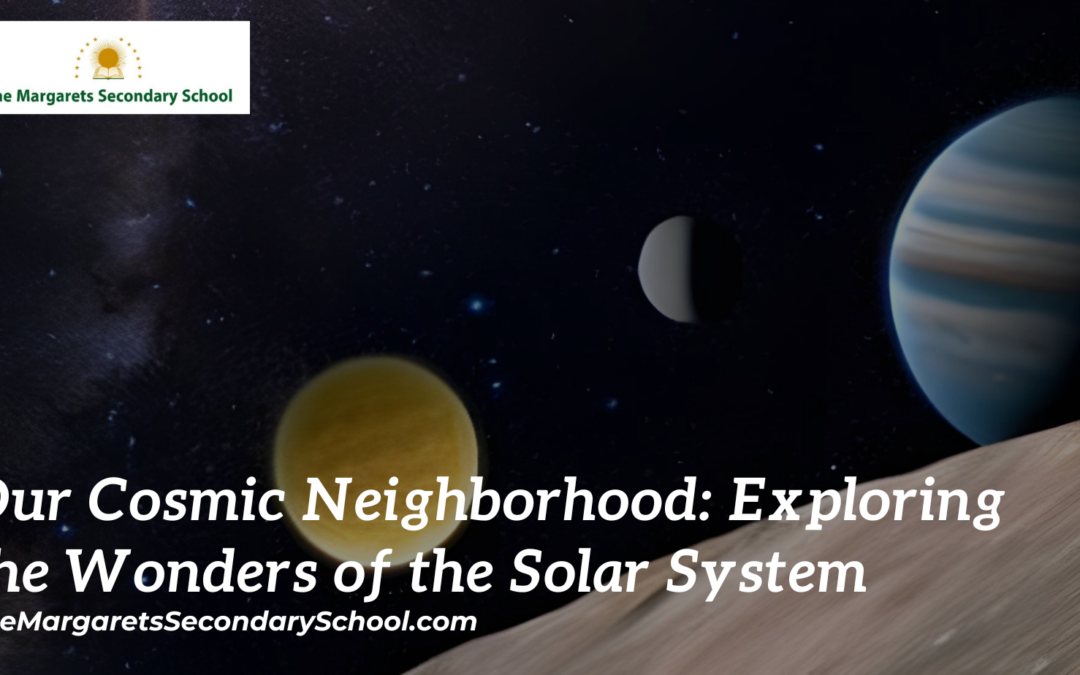The Solar System
In the vast expanse of space, our solar system stands as a mesmerizing spectacle of celestial bodies, each with its unique characteristics and mysteries. From the brilliant sun at its center to the diverse planets, moons, asteroids, and comets that orbit it, the solar system offers a captivating glimpse into the complexities of the universe. This article takes you on a journey through our cosmic neighborhood, unraveling the remarkable features and discoveries that make up the solar system.
The Sun: Radiant Heart of the Solar System
- Solar Dynamo: At the heart of the solar system lies the sun, a giant ball of plasma fueled by nuclear fusion. The sun’s immense gravity keeps all the planets and other objects in its gravitational grip.
- Energetic Eruptions: The sun is not just a shining ball; it’s a dynamic star with a complex magnetic field that gives rise to solar flares, coronal mass ejections, and the beautiful phenomenon of the auroras on Earth.
Planets: A Varied Family of Worlds
- Inner Terrestrial Planets: Closest to the sun are the rocky, terrestrial planets: Mercury, Venus, Earth, and Mars. Each planet boasts unique characteristics, from Mercury’s extreme temperature variations to Mars’ potential for past or present life.
- Outer Gas Giants: Beyond the asteroid belt, the gas giants—Jupiter and Saturn—dominate. These massive planets are mainly composed of hydrogen and helium and are known for their intricate ring systems and numerous moons.
- Ice Giants: Uranus and Neptune, the ice giants, are farther out in the solar system. They have icy compositions, unique ring systems, and a collection of captivating moons.
Diverse Moons and Mini-Worlds
- Earth’s Moon: Our moon is Earth’s constant companion, influencing tides and serving as a cosmic timekeeper. It has been a source of fascination and exploration for millennia.
- Jovian Moons: The gas giant planets have extensive moon systems. For instance, Jupiter’s moon Europa is believed to have a subsurface ocean that could harbor the conditions for life.
Exploring Small Worlds: Asteroids and Comets
- Asteroids: These rocky remnants from the early solar system orbit the sun, ranging from small pebbles to large objects like Ceres, which is considered a dwarf planet.
- Comets: Comets are icy bodies that originate from the outer regions of the solar system. When they approach the sun, their ices vaporize, creating stunning tails that can stretch across the sky.
Space Exploration and Human Curiosity
- Interplanetary Travel: Humans have sent robotic probes and spacecraft to explore many corners of the solar system. Missions like Voyager, Cassini-Huygens, and the Mars rovers have unveiled the secrets of distant worlds.
- Future Endeavors: Ongoing and upcoming missions promise to unlock even more of the solar system’s mysteries, from the exploration of the icy moons of Jupiter and Saturn to the study of Mars’ potential for past or present life.
Conclusion
The solar system is a realm of astonishing diversity, a cosmic dance of celestial bodies interacting with the gravitational pull of the sun. From the scorching inferno of the sun to the icy depths of the outer planets, the solar system reveals the beauty, complexity, and boundless potential for discovery that the universe holds. As our understanding of this captivating cosmic neighborhood grows, so does our sense of awe and wonder, inspiring us to continue exploring the mysteries that lie beyond our world.





